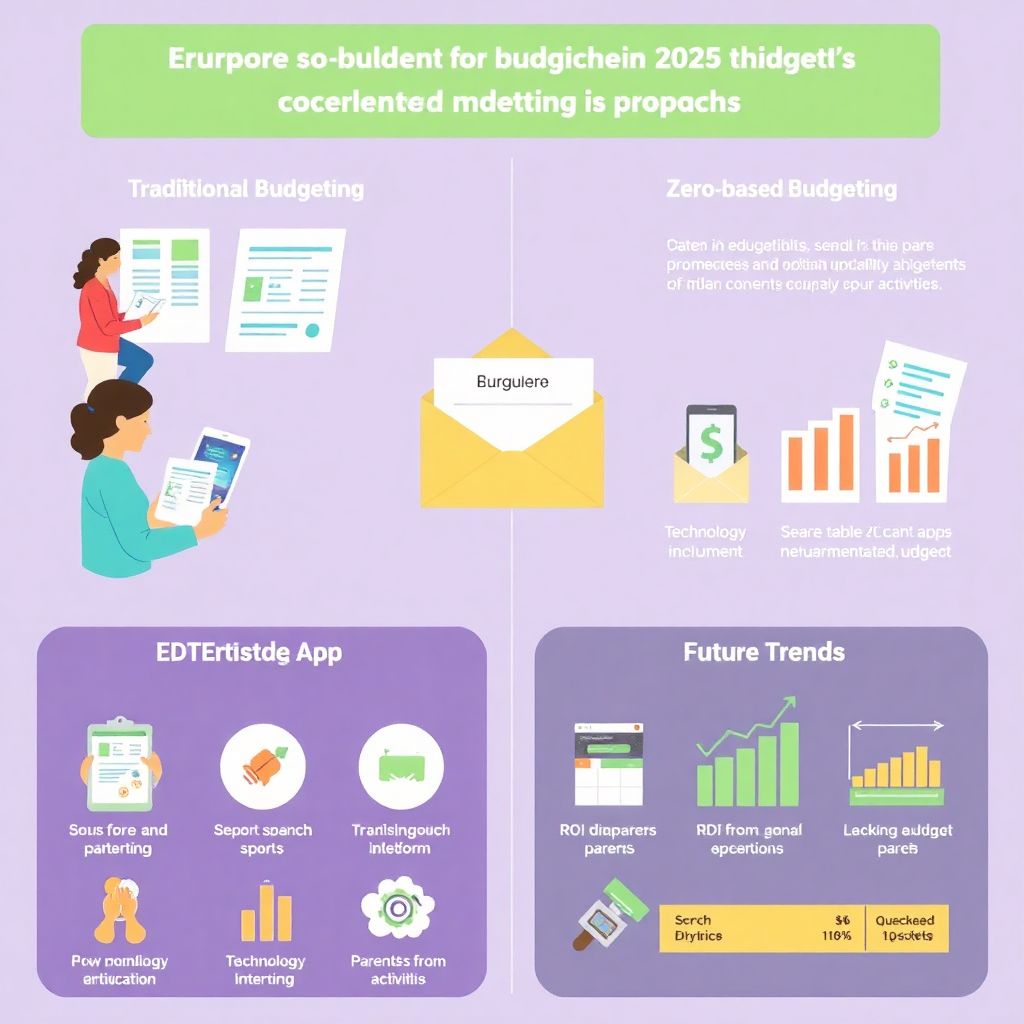Comparative Analysis of Budgeting Approaches for Child Enrichment
Traditional Budgeting vs. Zero-Based Approaches

Traditional budgeting allocates a fixed monthly or annual sum to children’s activities without reassessment, often based on previous years’ expenditures. In contrast, zero-based budgeting (ZBB) necessitates justifying every expense from zero, regardless of past allocations. For parents managing multiple extracurricular pursuits such as music lessons, sports teams, and STEM workshops, ZBB allows for dynamic reallocation based on changing needs and goals.
While traditional methods offer predictability, they may perpetuate inefficiencies, e.g., continuing underutilized memberships. ZBB ensures financial alignment with current priorities but requires higher time inputs and analytical discipline. Parents must regularly audit the utility and outcomes of each activity to avoid overspending on low-impact programs.
Envelope Budgeting and Digital Synchronicity
Envelope budgeting, where funds are pre-assigned to categories (e.g., “sports,” “arts,” “academic enhancement”), can be adapted digitally via budgeting apps with real-time category tracking. This hybrid method maintains the clarity of physical envelope systems while leveraging automation. However, in cases of unpredictable expenses—such as sudden equipment upgrades or competition fees—such rigidity may be limiting.
Technology Integration in Activity Budgeting
Benefits and Drawbacks of EdTech Platforms
Modern budgeting for children’s activities increasingly intersects with educational technology. Platforms such as ClassDojo, Prodigy, or Outschool provide subscription-based access to lessons and activities. Integrating cost-tracking into these platforms helps quantify ROI (Return on Investment) in terms of skills acquired or academic progress.
Advantages include:
1. Modular pricing schemes tailored to budget constraints.
2. Access to performance analytics for cost-to-benefit assessments.
3. Reduced transportation and scheduling overhead.
However, drawbacks include:
– Overreliance on virtual formats can diminish social learning.
– Hidden costs (e.g., premium content) may inflate the actual budget.
– Difficulty in benchmarking quality vs. cost across platforms due to inconsistent metrics.
Practical Recommendations for Budget Optimization
Structured Evaluation and Prioritization
To effectively manage the budget for a child’s extracurricular development, consider this step-wise process:
1. Inventory Current and Planned Activities: List all lessons and programs, including hidden costs like transportation or attire.
2. Define Educational Objectives: Categorize each activity by its developmental goal — cognitive, physical, social-emotional.
3. Assign Value Ratings: Score each based on cost-efficiency, skill impact, and child engagement.
4. Implement Tiered Allocation: Prioritize high-return activities for full funding, medium for partial, and reconsider low-impact ones.
5. Review Monthly: Adjust allocations bi-monthly or quarterly based on performance and feedback.
This methodology ensures that fiscal resources are directed toward activities that offer measurable educational or developmental outcomes.
Outsource Strategically
When costs escalate, parents may consider outsourcing certain roles. Hiring a shared tutor, joining local learning pods, or participating in community-funded programs can reduce per-child costs. Group discounts and co-op educational models are resurging as efficient budgetary alternatives in 2025.
Trends and Economic Factors Shaping 2025 Budgets
Shift Toward Micro-credentials and Agile Learning
2025 sees a growing shift toward micro-credentialed learning—short, skills-oriented courses tracked via digital badges. These typically present lower financial thresholds than traditional semester-long lessons. Parents are redirecting budgets into stackable programs that allow dynamic pacing and modular completion.
Inflation-Aware Budgeting with AI Tools
With inflation affecting service-based sectors, more families are integrating AI-powered financial planning tools. These platforms anticipate price increases, simulate scenario planning, and recommend reallocations in real time.
Emerging solutions like TotemBudget or EduTrack integrate expense forecasting with educational milestones. They evaluate whether increased spending correlates with enhanced academic performance or well-being, helping parents make data-informed decisions.
Community-Based Aggregation Models
With increasing cost pressures, 2025 favors cooperative budgeting models. Parent collectives and PTA-run enrichment groups allow shared access to instructors or spaces. This distributed-cost approach supports equitable access across socioeconomic tiers and allows for scalable funding strategies.
Conclusion

Implementing a robust budgeting strategy for a child’s activities and lessons demands more than cost-cutting—it requires continuous re-evaluation of impact. By aligning financial planning with educational goals, utilizing digital tools for real-time tracking, and responding to emerging trends like micro-credentialing, families can ensure optimal use of resources. The future of child enrichment budgeting lies in adaptability, data-driven decision-making, and community-based resource sharing.

